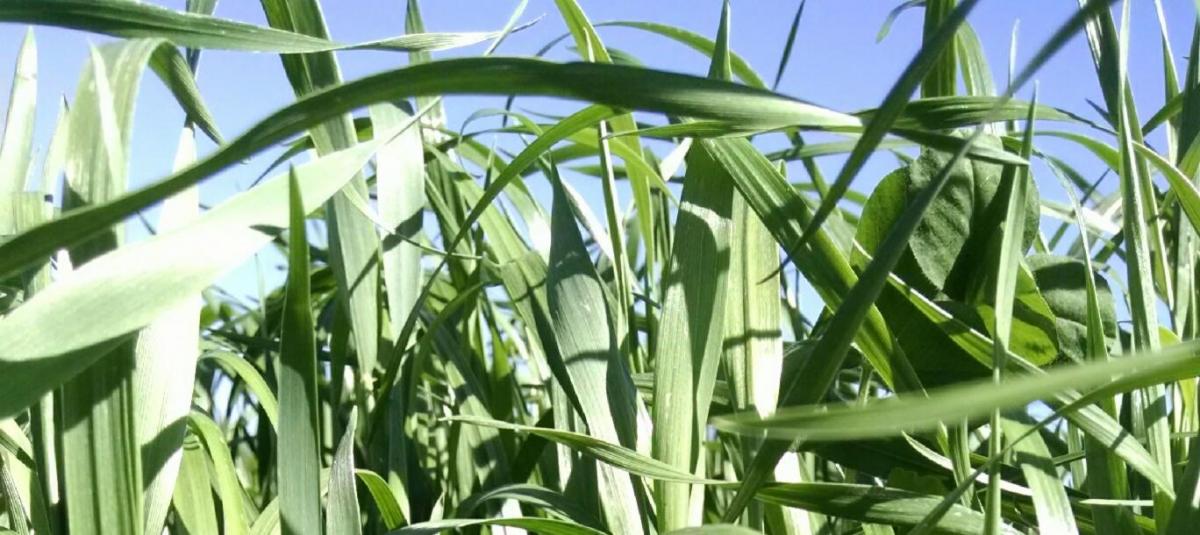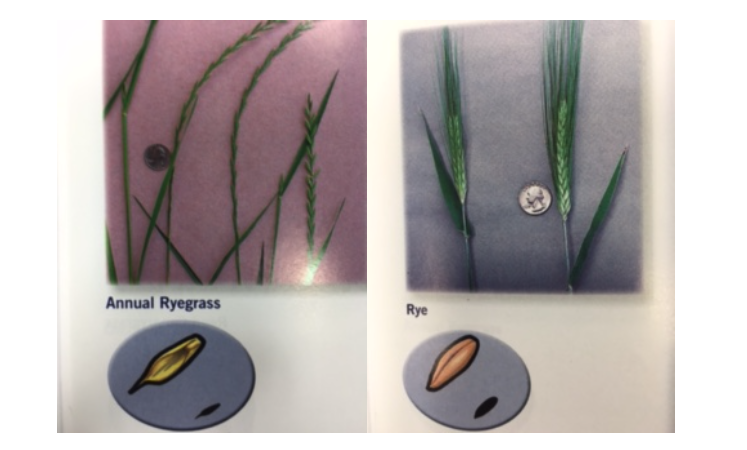
If there was an “All Star List” for forage crops, ryegrass would have to be on it. Ryegrass can be grown in many areas, it has the potential to produce a good forage yield, it is easy to establish, and it provides excellent nutrition for forage-consuming animals. Given these attributes, it is not surprising that ryegrass is widely grown on forage-livestock farms, especially in the Southeast.
This grass is important and versatile. However, there is some confusion and misunderstanding about certain characteristics of the grass and some of the information provided about it. Consequently, it may be helpful to discuss some of these factors or points.
Annual Versus Perennial
Annual ryegrass and perennial ryegrass are separate species, but the appearance of these grasses is similar, and both can produce forage that has excellent forage quality. In relatively mild climates such as in the Upper Midwest, Northeast, and Pacific Northwest, perennial ryegrass may live for several years, but in the Southeast it acts like an annual. During the establishment year, perennial ryegrass is not as productive yield-wise as annual ryegrass, so annual ryegrass is a better choice for forage production in most of the nation.
Italian Versus Westerwold
There are two types of annual ryegrass. “Westerwold” ryegrass plants make a seedhead and die in less than one year. “Italian” ryegrass does the same when planted in most parts of the nation, but when planted in spring in the northern USA, it has the potential to live for slightly more than one year. Numerous varieties of each type are commercially available. In the Southeast, ryegrass varieties usually are not identified as Westerwold or Italian types because the length of the growing season in this region is similar regardless of date of planting.
Diploid Versus Tetraploid
A ryegrass variety, whether annual or perennial, is either “diploid” (has two sets of chromosomes) or tetraploid (has four sets of chromosomes). In general, tetraploid plants are taller and have wider leaves. However, stands of diploid types are usually more dense. The forage yield and winter hardiness of ryegrass varieties within each ploidy level vary widely. The photograph at the beginning of this article shows side-by-side plots of a good diploid variety (left side) and a good tetraploid variety (right side).
Forage Types Versus Turf Types
There are annual ryegrass varieties and perennial ryegrass varieties that were developed for use in turf situations. Turf types are usually low-growing, have fine leaves, and produce low dry matter yields. Some varieties of ryegrass have some level of infection of an endophyte (internal fungus) similar to the endophyte in many tall fescue varieties. No negative effects on livestock of endophyte presence in annual ryegrass has been reported. However, in perennial ryegrass, the presence of an endophyte can result in an animal disorder called “ryegrass staggers.” This problem has primarily been encountered in New Zealand.
Use As A Cover Crop
While both annual ryegrass and perennial ryegrass are planted primarily for forage, in recent years annual ryegrass has increasingly been planted as a cover on summer row crop land. Some highly winter hardy varieties are even being planted in many parts of the Midwest, sometimes in a pure stand and in other situations in a mixture with other winter annual forages. There seems to be great potential for expansion of this practice, which could possibly significantly increase the demand for seed of annual ryegrass.
Ryegrass Versus Rye
Some people shorten the term “ryegrass” and just refer to “rye,” which is unfortunate because it often causes confusion. Annual ryegrass (Lolium multiflorum), and perennial ryegrass (Lolium perenne) are closely related species. However, rye (Secale cereal) is a small grain that has a growth habit and appearance more similar to wheat, oats, barley and triticale.
However, annual ryegrass and rye are often planted together to provide grazing for livestock, because the distribution of forage growth of the two are complementary. Rye typically makes significantly more autumn and later winter growth than annual ryegrass, but the latter makes more spring growth. However, the appearance of seed and plants appearance of rye and annual ryegrass are distinctly different (see photographs).

Courtesy of International Plant Nutrition Institute, Peachtree Corners, GA
___________________
Foraging Ahead is a column presented by Ragan & Massey and written by Dr. Don Ball, Professor Emeritus at Auburn University. Dr. Ball is one of the authors of the popular book “Southern Forages” available here.
